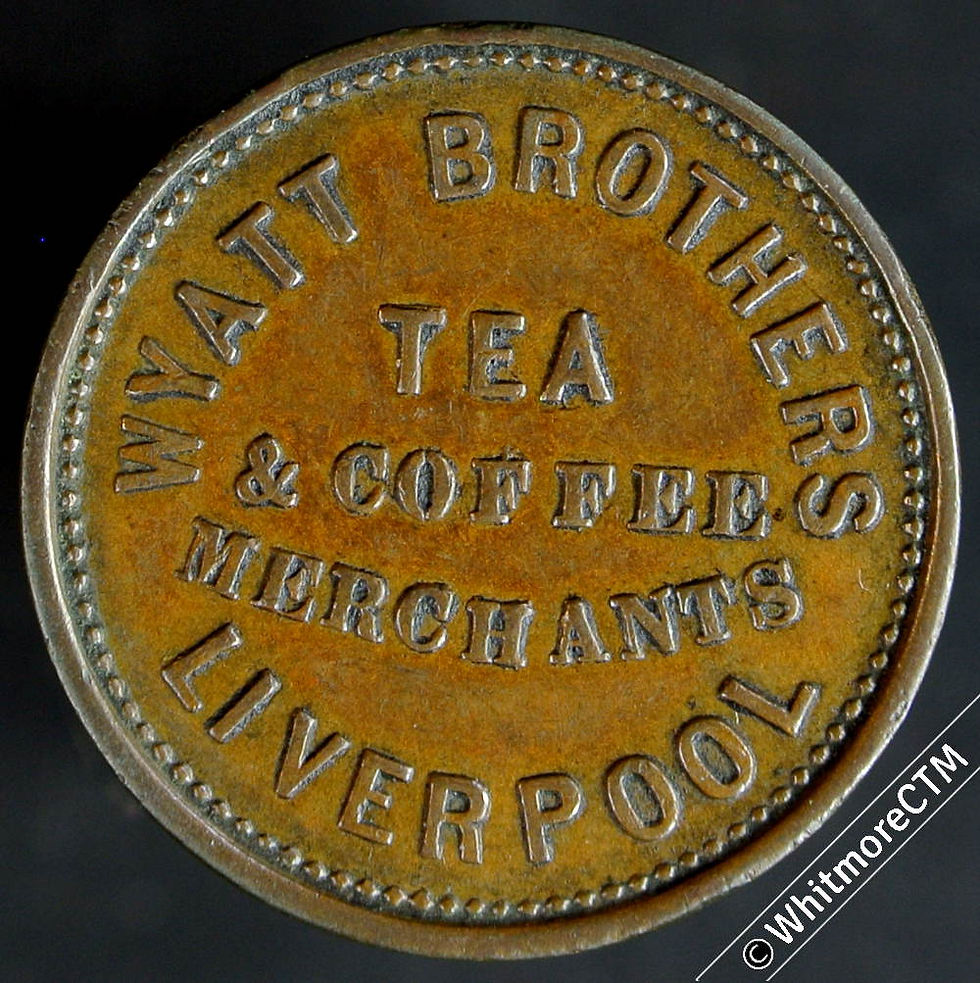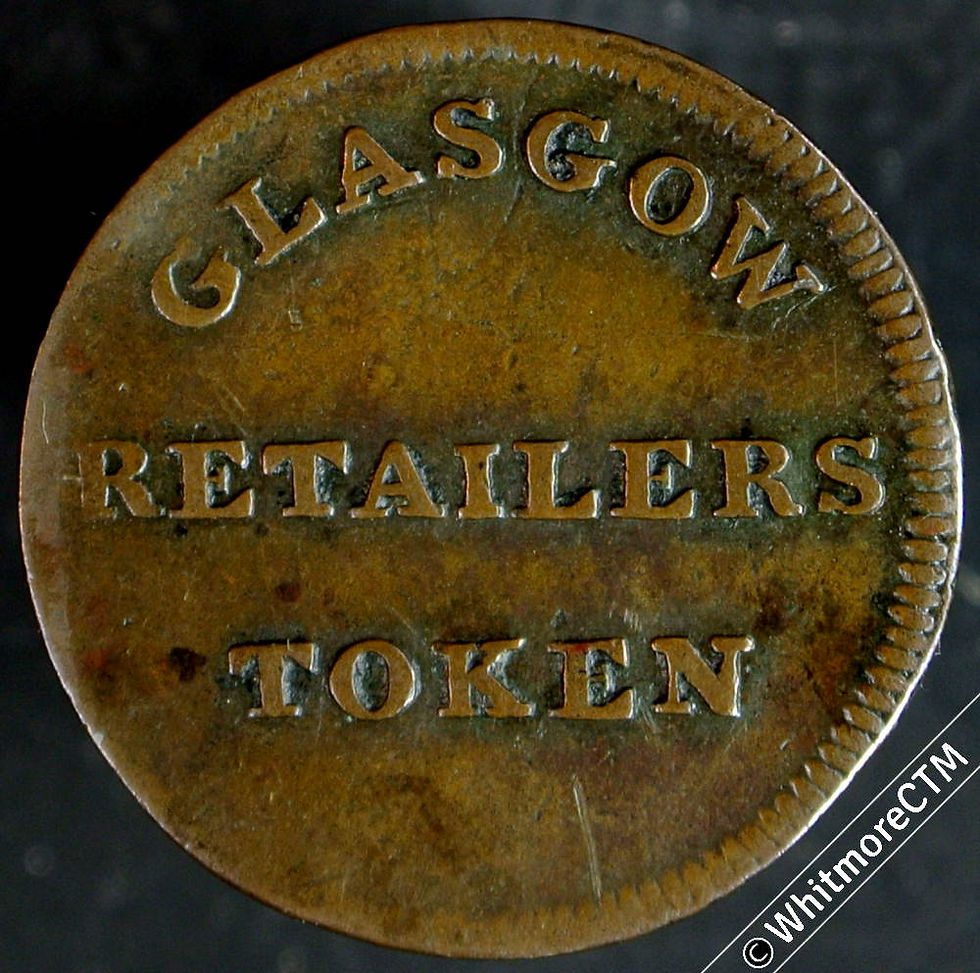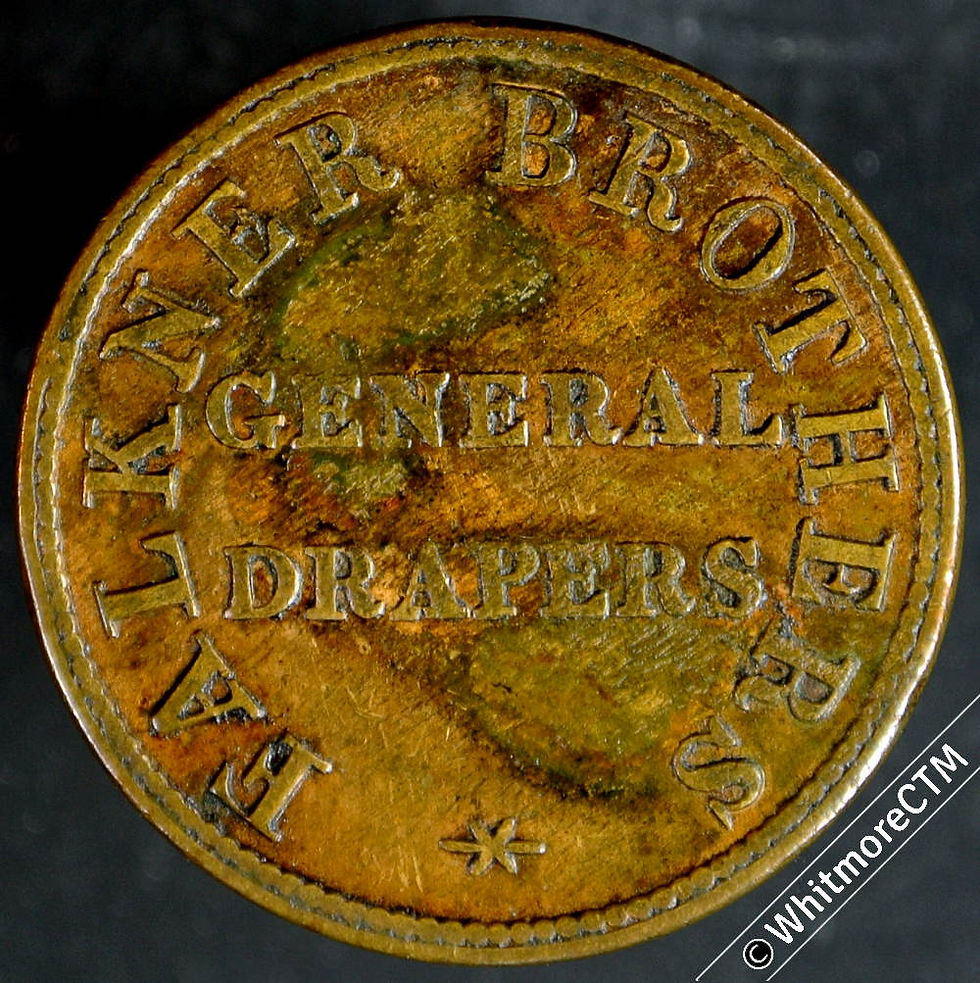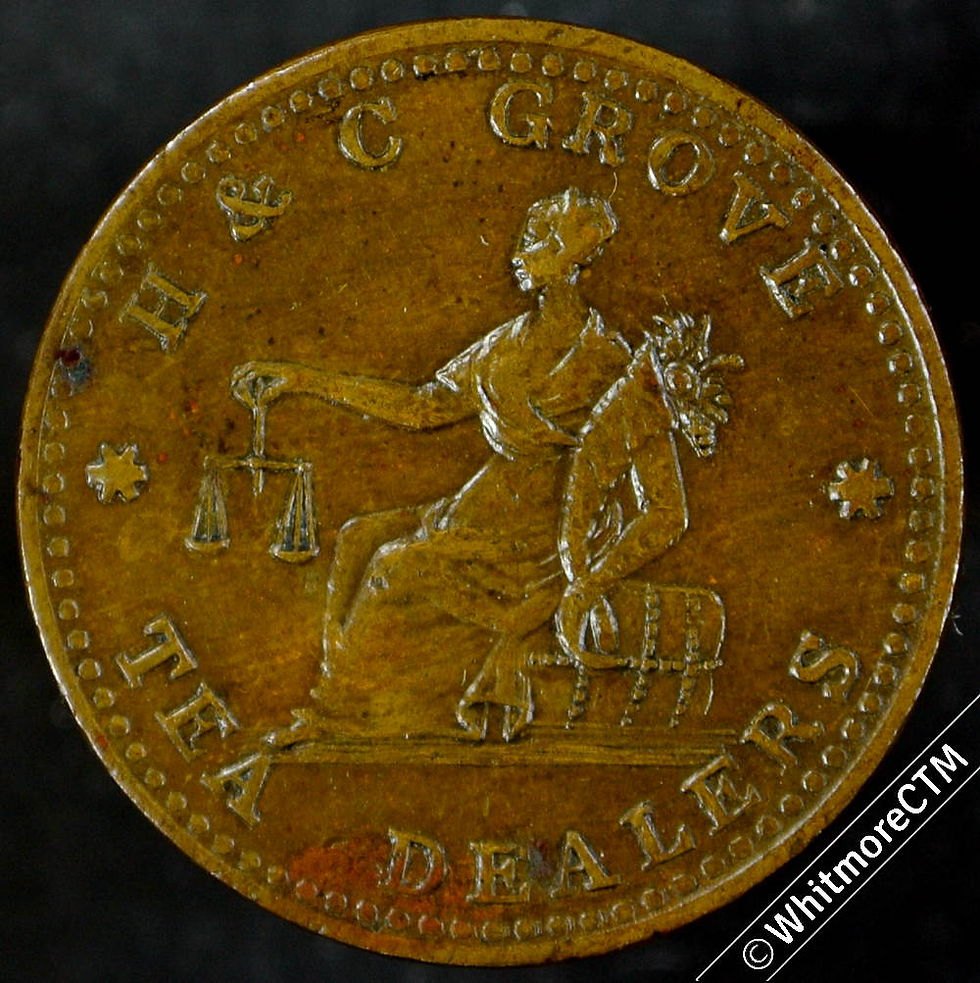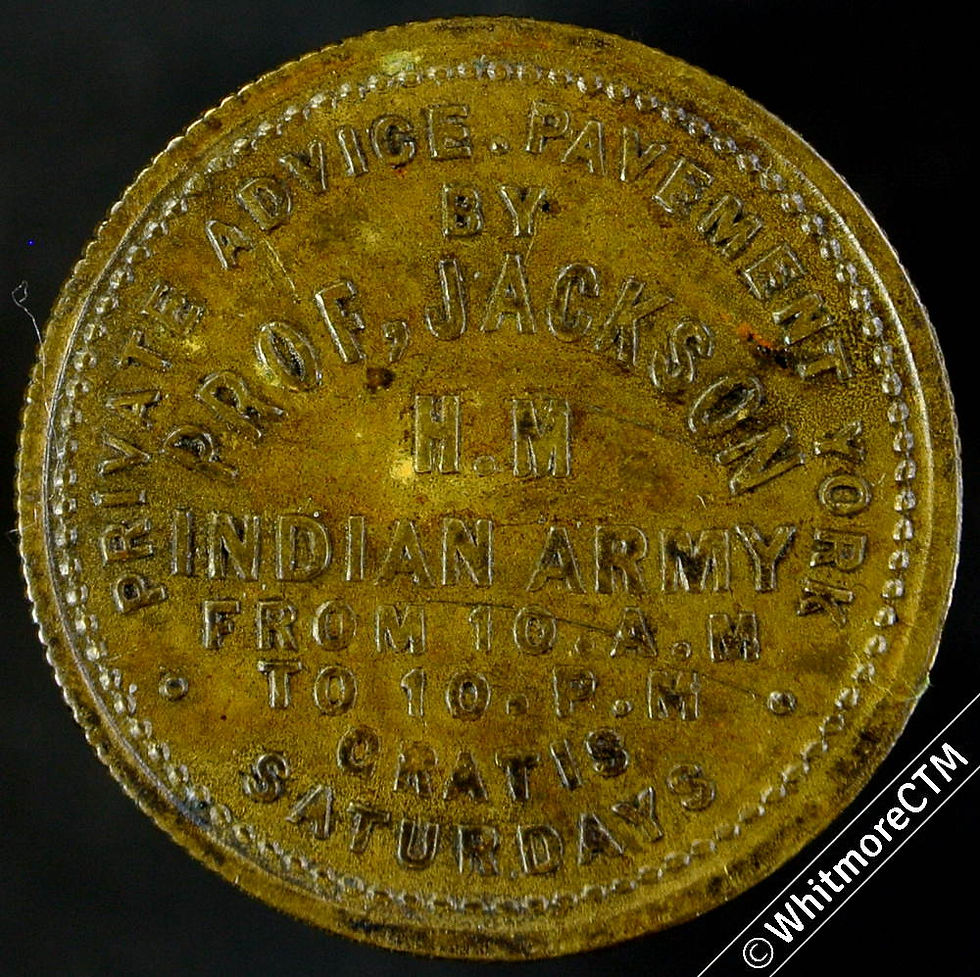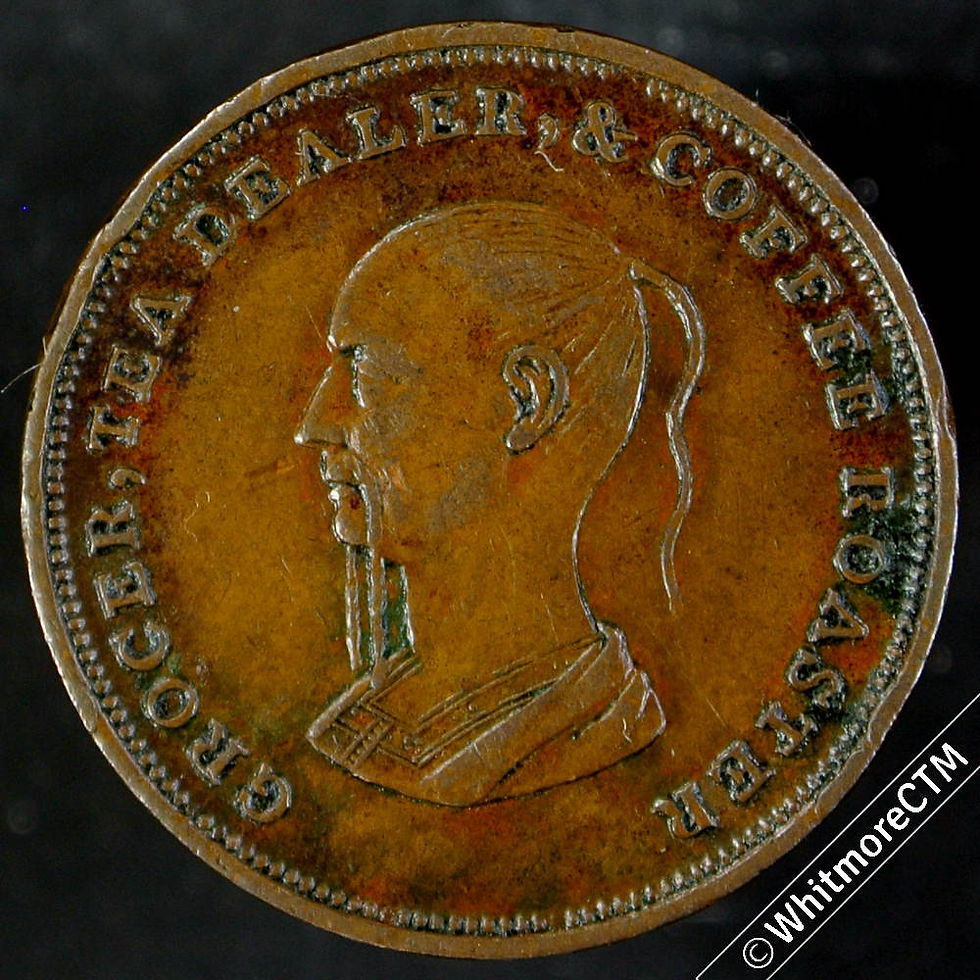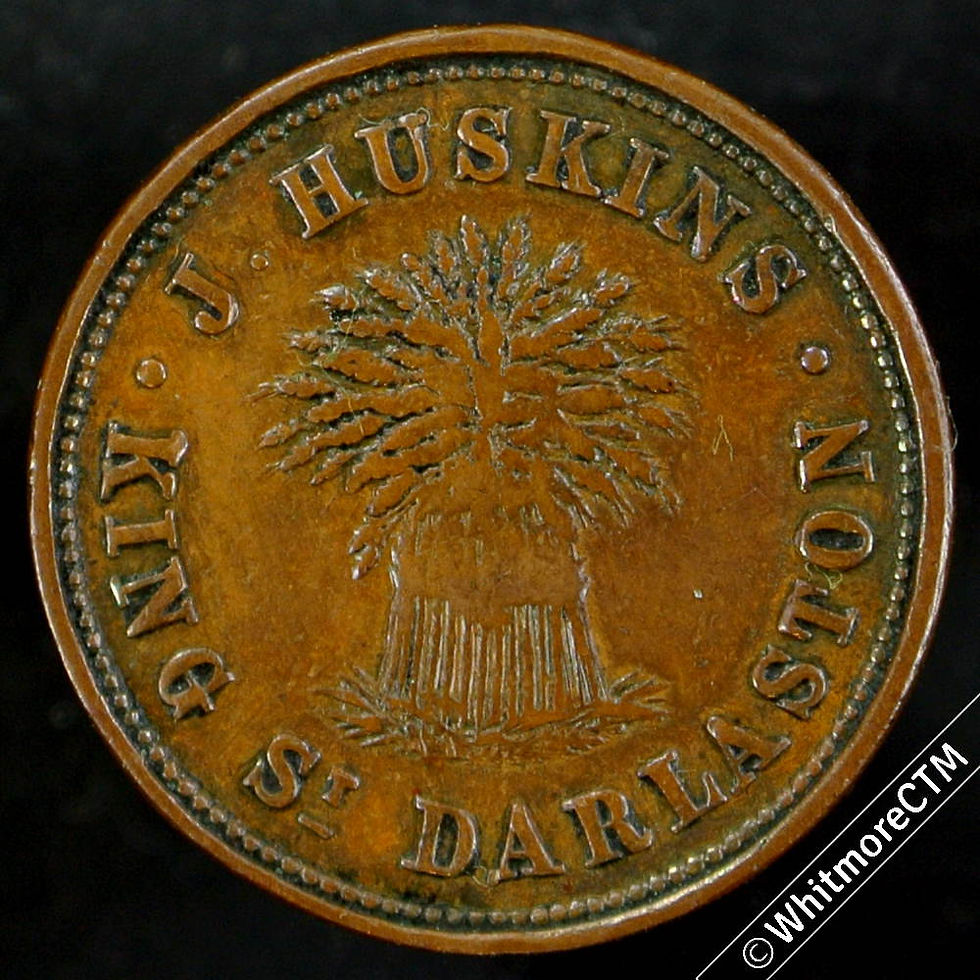LITTLE NUISANCES
Since 1820 the Royal Mint on behalf of the Treasury has been far more diligent in supplying the coinage needs of the nation. Two aspects initially made the task difficult. Even today an examination of a quantity of loose change is likely to show that most examples of the lowest value coin, at present the decimal penny, appear to be nearly new. In order to combat this tendency for the lowest value coin to fail to circulate efficiently, mints have either to produce excessive quantities or acquiesce to shortages. Secondly it was difficult and expensive to move large quantities of low value coins to the remoter parts of the country before the completion of a rail network. From 1820, until a concerted effort was made to increase the volume of copper coinage around 1853, and probably for some years later, farthings were often in short supply outside London. This provided opportunities for tokens to be produced when regal coins were unavailable, and although the authorities were more willing than before to enforce the law against tokens as low as a halfpenny in value, they seemed fairly content to let unofficial farthings circulate unhindered.
A rather mysterious series of anonymous farthing sized tokens, usually bearing the legend Columbia, appeared from time to time in the 1820's as temporary shortages occurred. In addition a wide range of traders issued their own farthings, which after 1838 often included copies of the coinage portrait of Queen Victoria. Some precautions against a charge of counterfeiting remained in that they rarely, except in Ireland, openly stated their value, and they never repeated the royal titles in Latin. Issues were particularly frequent around 1851, when the Crystal Palace erected for the Great Exhibition eclipsed the Queen's portrait as a popular device.
The large production of regal copper from 1853 together with better facilities for national distribution seems to have reduced demand for private supplies. In 1860 the large soft copper coinage was replaced with smaller and harder wearing bronze. Once this process was complete, distribution of all the bronze denominations seems to have been adequate throughout the country, finally ending any need for even farthing tokens as coinage substitutes after some two centuries of intermittent production.
























